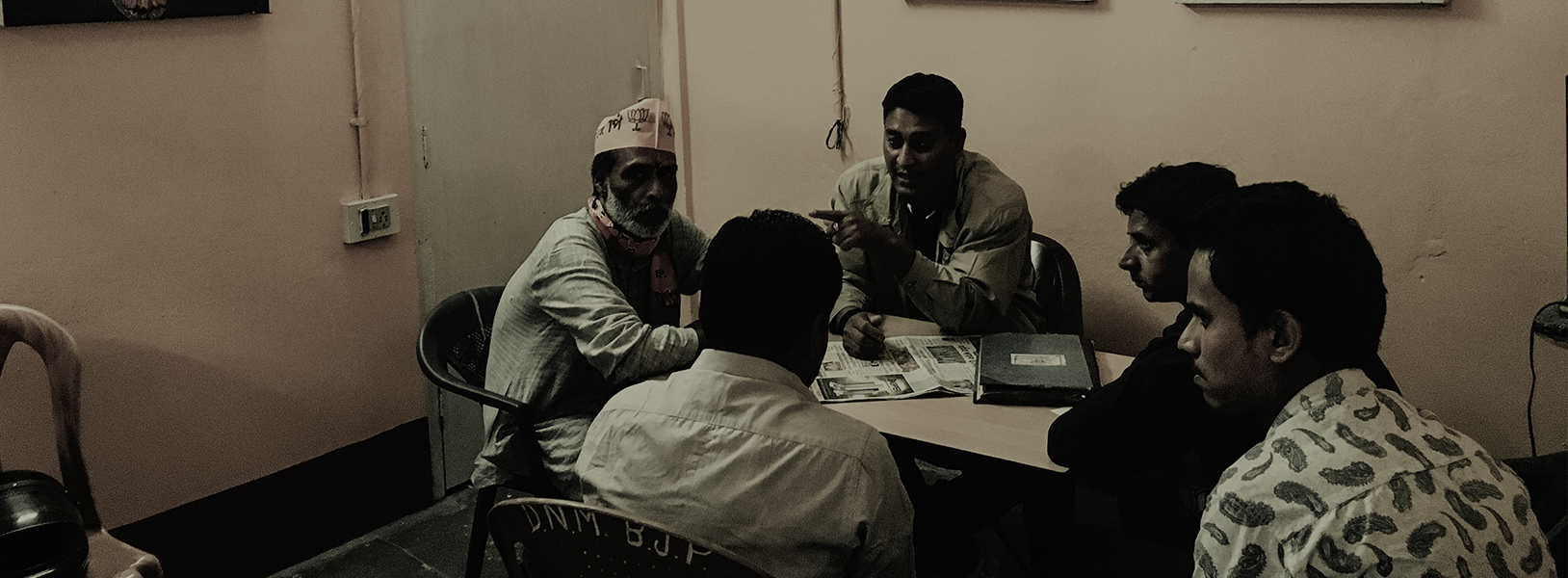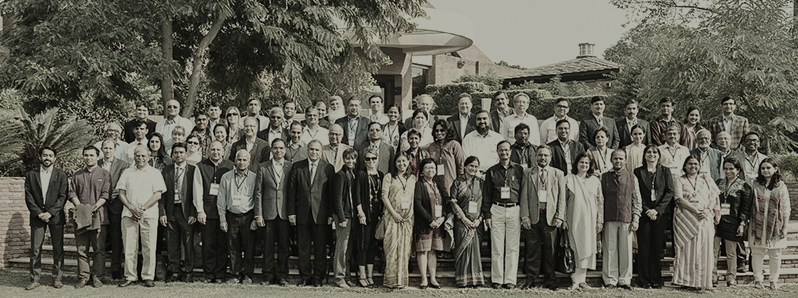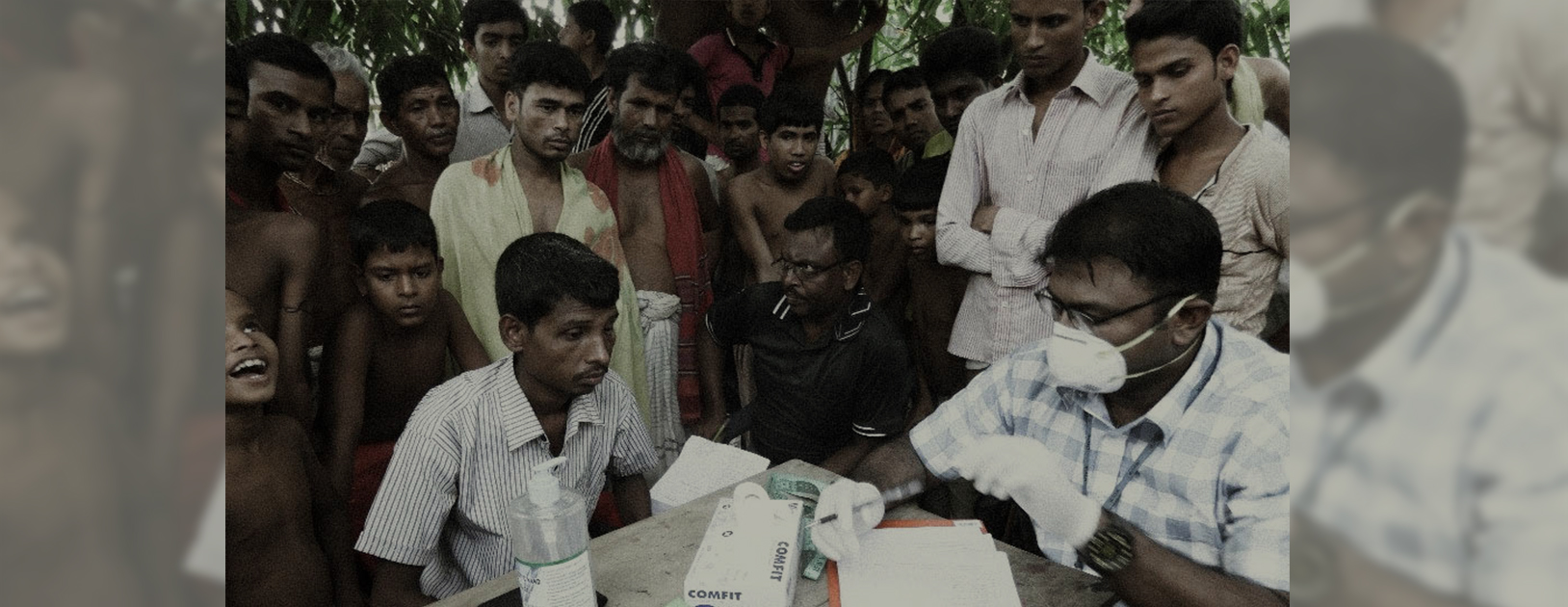
AS PART OF ‘POLICY CHALLENGES – 2019-2024: THE BIG POLICY QUESTIONS FOR THE NEW GOVERNMENT AND POSSIBLE PATHWAYS’
CPR ECONOMY IDENTITY DISCRIMINATION
By Neelanjan Sircar
According to the International Labour Organization, female labour force participation in India dropped from 35% in 1990 to 27% in 2014.1 The gender gap in labour force participation in 2014 was 53 percentage points,2 and urban female labour force participation in India has all but stagnated for the last two decades.3
This has occurred in a context of rising per capita income – which accelerated in India from the 1990s onward – and a significant reduction in fertility rates. Indeed, standard economic theory predicts that as countries move from lower income to middle income (as India is doing), women leave the workforce as there is less need to engage in the most arduous forms of labour – such as agriculture and brick kilns – for a bit of extra money. As incomes rise sufficiently, it is argued that women are offered white-collar jobs and re-enter the labour force – as in the West.
But India’s numbers are far worse than what standard theories predict. A recent World Bank report found that the country is ranked 121st out of 131 countries in the female labour force participation rate, and much worse than many of its neighbours.4 In fact, Sri Lanka’s female labour force participation stabilized at around 35% decades ago, and Bangladesh consistently demonstrates well over 50% female labour force participation.
Most worryingly, India is losing its most educated and productive women.5 National Sample Survey (NSS) data shows that women who have passed higher secondary have the lowest female labour force participation in India.6 This is to say nothing of the ‘marriage penalty’ or ‘child penalty’ for women who drop out of the labour force due to marriage and childbirth. It is increasingly obvious that standard economic theory has it exactly backwards. We can’t wait for incomes to rise: incomes in India will stagnate unless we find ways to get women, especially the most economically productive, back into the labour force.
What can policymakers do to draw women back into the labour force?
Answering this question necessitates a closer look at the data. Recent research shows that the decline in female labour force participation in India is largely due to a drop in women entering the labour force in rural India.7 In plain language, this means that as rural incomes rise, women prefer not to do the backbreaking work of agricultural labour – which is understandable. But even then, there is still significantly greater female labour force participation in rural areas compared to urban areas. In other words, even with rising incomes, women in urban areas are not entering the labour market. The important question is this: why are women refusing or unable to enter the labour force in urban areas, where higher wage and higher skill jobs are available in greater numbers?
The challenges of integrating women into the labour force will only be accentuated as India continues to urbanize. From 2001-2011, the urban population growth rate was 2.4 times that of the rural population growth rate in India, significantly higher than any other decadal urban-rural population growth ratio in the country’s history. We only expect this process to accelerate. India is likely to see its urban population rise from 338 million in 2010 to 875 million in 2050; the increase of 497 million between 2010 and 2050 is the largest projected growth in urban population in world history.
Of course, the country will continue to manifest pernicious patriarchal norms that prevent women from entering the labour force. However, as our data shows, women themselves are quite willing to work – and the men in the household are supportive of it, despite these patriarchal norms. But it is Indian cities that are not hospitable to women entering the labour force. The proximate policy challenge for increasing female labour participation, thus, centres around managing rural-urban transitions and making cities hospitable places for women to work.
Why Are Indian Cities So Inhospitable to Women Wanting to Work?
Our understanding of female labour force participation must necessarily encompass a broad swathe of economic activities and opportunities. Labour force participation may be ‘formal’ or ‘informal’, given that most labour in India is in informal sectors. Labour force participation may also include entrepreneurship activities, from operating stores and food stalls to trading. It has been widely recognized that the role of many women in household duties – and its contribution to household economic productivity and expenditure saving8 – is rarely measured properly. Nonetheless, one must acknowledge the importance of female labour force participation outside the home. The opportunity to engage in economic activity outside the home increases the marginal value of employment, and it is also more likely to break discriminatory gender norms that coerce women to stay at home. Thus, no matter how incomplete the definition, standard measures of female labour force participation are important in and of themselves.
From an economic perspective, a woman’s decision to participate in the workforce is broadly viewed as a consequence of evaluating two trade-offs. First, as aggregate household income increases, the marginal benefit of entering the labour force is thought to decrease; that is, if there is sufficient money in the household, there are weaker incentives to get a job. Second, the incentive to join the labour force decreases as the opportunity costs (psychic or financial) of leaving home increase; that is, if it is particularly difficult to carry out necessary tasks at home while working, an individual would be less likely to work a job outside the home.These economic trade-offs, in turn, interact with urbanization in particular ways to negatively impact opportunities for women to enter the labour force.
In rural India, agricultural work is typically near the home, so there is a natural source for female employment. Even in non-farm work, rural India has demonstrated the capacity to employ women. For instance, more women than men availed of the opportunities provided by the Mahatma Gandhi National Rural Employment Guarantee Act (MGNREGA) – often, small infrastructural work near the village.9
In urban India, on the other hand, such a natural source of women’s employment rarely exists near the home. Industries like construction tend to be less preferred by women and also tend to discriminate against women in hiring. This obliges women in urban India to look far from home for suitable employment. Unfortunately, the lack of safe transport for women to travel significant distances creates obstacles to working outside the immediate locality. If women are unable to procure safe and stable transport to and from a place of work in urban spaces, they are unlikely to enter the labour market, which likely negatively impacts female labour force participation.
These challenges help explain why urban women, among the most skilled in the population, are often missing from the labour market. In principle, more well-off and educated women should be able to command higher wages and better jobs, which would facilitate their entry into the labour force. But availing of these jobs often implies that women have to travel far for a suitable job. Thus, while a section of economists continue to argue that urban Indian women simply choose to stay at home as income rises, the real reason for low urban female labour force participation may well be the increased ‘costs’ of entering the labour market.
A Data-Driven Perspective
While the aggregate data shows a worrying trend of declining female labour force participation, we still lack systematic large-scale data on the labour market behaviour of working-age women. I have been conducting a wide-ranging study of female labour force participation jointly with Apurva Bamezai, Devesh Kapur and Milan Vaishnav. The research is taking place in four cities – Dhanbad, Indore, Patna and Varanasi – and the surrounding peri-urban and rural areas of each city. In each of the four urban areas (and surrounding areas), 3500 households are to be surveyed. In each household, a working-age female and the (usually male) primary wage earner is to be interviewed. This allows us to understand not only women’s own perceptions about the labour market but also possible constraints from men in the household.
Preliminary data from completed surveys in Dhanbad, Patna and Varanasi reveal important trends. In each of these three cities, only 20-30% of working-age women are (or have ever been) in the labour force. This is consistent with the overall national employment numbers described above. If a woman is in the labour force, she is 20 to 30 percentage points more likely to be engaged in agriculture compared to her working male counterpart. This suggests that even when they are able to enter labour force, a disproportionate number of women are engaged in labour near the home.
There is little evidence that women are willingly opting out of the labour force, as posited by the theory of income effects. Among working-age women who have never been employed, we find that 60-70% of women are willing to work if offered a suitable job.10 Somewhat surprisingly, a very similar percentage of male respondents believe that the woman should be allowed to work if offered a suitable job.
In each of these three cities, less than 30% of women feel ‘very safe’ travelling alone at night, compared to more than 40% of men. Our preliminary analyses also indicate that perceptions of easy, safe travel are major determinants of whether a woman is willing to enter the labour force. Taken together, this provides suggestive evidence that the city can be inhospitable to women who are willing to enter the labour force, even if there is support at home.
The Way Forward
Declining female labour force participation is a deeply worrying trend that must be reversed if India is to accelerate its economic development. Strong patriarchal norms still exist in India, but, as discussed here, low female labour force participation is about much more than social conservatism: a prime cause is how Indian cities discourage women from entering the labour force.
Fundamentally, women are not joining the workforce in urban India because urban infrastructure is failing them. The data suggest that there exist both a desire for women to work and support at home for it, provided there is stable and safe transport to and from work. Indeed, recent work by Girija Borker has shown how the safety of the Delhi Metro provided many college-going women the opportunity to attend high-quality colleges far from home.11 A similar principle is likely to encourage greater female labour force participation as well.
But the challenges of each Indian city are unique and context-specific. There are a number of complicated social factors that impact female labour force participation, and it would be foolhardy to generalize too much from the data we have collected. Ultimately, more systematic large-scale data collection on women’s labour choices is required, as this is the only way to identify actionable policies to address India’s low female labour force participation.
Other pieces as part of CPR’s policy document, ‘Policy Challenges – 2019-2024’ can be accessed below:
The Future is Federal: Why Indian Foreign Policy Needs to Leverage its Border States by Nimmi Kurian
Rethinking India’s Approach to International and Domestic Climate Policy by Navroz K Dubash and Lavanya Rajamani
India’s Foreign Policy in an Uncertain World by Shyam Saran
Need for a Comprehensive National Security Strategy by Shyam Saran
A Clarion Call for Just Jobs: Addressing the Nation’s Employment Crisis by Sabina Dewan
Time for Disruptive Foreign and National Security Policies by Bharat Karnad
Multiply Urban ‘Growth Engines’, Encourage Migration to Reboot Economy by Mukta Naik
Schooling is not Learning by Yamini Aiyar
Clearing Our Air of Pollution: A Road Map for the Next Five Years by Santosh Harish, Shibani Ghosh and Navroz K Dubash
Protecting Water while Providing Water to All: Need for Enabling Legislations by Philippe Cullet
Interstate River Water Governance: Shift focus from conflict resolution to enabling cooperation by Srinivas Chokkakula
Managing India-China Relations in a Changing Neighbourhood by Zorawar Daulet Singh
Beyond Poles and Wires: How to Keep the Electrons Flowing? by Ashwini K Swain and Navroz K Dubash
Regulatory Reforms to Address Environmental Non-Compliance by Manju Menon and Kanchi Kohli
The Numbers Game: Suggestions for Improving School Education Data by Kiran Bhatty
Safe and Dignified Sanitation Work: India’s Foremost Sanitation Challenge by Arkaja Singh and Shubhagato Dasgupta
Safeguarding the Fragile Ecology of the Himalayas by Shyam Saran
Towards ‘Cooperative’ Social Policy Financing in India by Avani Kapur
1 International Labour Organization, ‘Key Indicators of the Labour Market Database’, 2016, http://data.worldbank.org/indicator/SL.TLF.CACT.FE.ZS.
2 World Bank, ‘World Development Indicators’, Database, 2015.
3 Stephan Klasen and Janneke Pieters, ‘What Explains the Stagnation of Female Labor Force
Participation in Urban India?’, The World Bank Economic Review 29(3) (2015):449-478.
4 Louis A. Andres, Basab Dasgupta, George Joseph, Vinoj Abraham and Maria Correia, ‘Precarious Drop Reassessing Patterns of Female Labor Force Participation in India’, World Bank Policy Research Paper No. 8024 (World Bank, 2017).
5 It is worth noting that women who are college graduates do show somewhat higher levels of labour force participation. But this is likely explained by the fact that households with the most liberal attitudes towards female work allow their daughters to complete college and not get married as early, and display a host of other factors likely to encourage female labour force participation.
6 Farzana Afridi, Tara Dinkelman and Kanika Mahajan. ‘Why Are Fewer Married Women Joining the Work Force in India? A Decomposition Analysis over Two Decades’, IZA Working Paper No. 9722 (2016).
7 Ibid.
8 Ashwini Deshpande and Naila Kabeer, ‘(In)Visibility, Care and Cultural Barriers: The Size and Shape of Women’s Work in India’, Ashoka University Economics Discussion Paper 04/19. (2019).
9 Economic Survey 2018.
10 This is consistent with recent evidence from the NSS. Erin Fletcher, Rohini Pande and Charity Maria Troyer Moore, ‘Women and Work in India: Descriptive Evidence and a Review of Potential Policies’, HKS Working Paper No. RWP18-004 (2017).
11 Girija Borker, ‘Safety First: Perceived Risk of Street Harassment and Education Choices of Women’, Working Paper, 2018.





